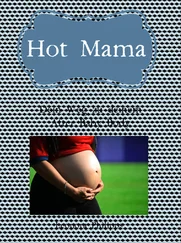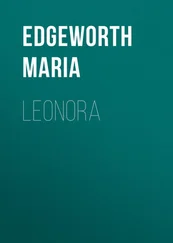‘She’s a Yank who knows how to throw her money around.’
‘And Max?’
‘I would rather not discuss that son of a bitch.’
‘What do you mean son of a bitch?’
‘You’ll understand later, when we get to Mexico. In my opinion, Max is a bastard.’
Leonora keeps quiet and repeats as if she were reciting the rosary: ‘I married Renato, I am travelling from here with Renato, I am with Renato. If I owe anything to anyone, it’s to Renato.’
At Crookhey Hall, everything was always kept under lock and key. Now she, too, guards her secret — the decision to follow Renato — deep in her heart.
At the Mexican Consulate, endless applications for departure visas are overwhelming Leduc, and he returns home in a state of daily exhaustion.
‘It’s so dramatic, it looks like another Great Flood, everyone is huddling for refuge under the wing of Mexico.’
‘Don’t forget to get at least one last pair of lizards onto the ark, although in your country they may well turn into crocodiles.’
Sitting in their deckchairs on the top deck of the Exeter , beside Renato who keeps her snug under a rug, makes her feel more at ease. The sailors all turn to stare as Leonora’s hair blows in the wind. Leonora pays scant attention to the noise of the ship’s machinery, or to the shortage of food.
‘Renato, there where the sea meets the horizon, I can see a castle.’
‘It’s a mirage.’
‘Christ comes walking across the waters.’
‘I thought you weren’t a believer?’
‘I think he must be drunk, because he’s walking in zigzags.’
The dawn, the dusk, the salty air and the gulls in flight give her a sense of well-being she hasn’t experienced for years.
LEONORA AND RENATO LIVE on 306 West 73rd Street, in downtown Manhattan. Every morning, Leduc goes to work at the Mexican Embassy and Leonora, lingering with a degree of trepidation, only emerges on to the street with her mac around her shoulders and a cigarette between her lips after having downed several cups of tea. She walks and walks, nothing pleases her more than walking. What a way to defy the skies over New York! Not only does the city grow upwards, but it has its roots in the seabed, and the skyscrapers cling to the ground so they won’t take flight. Crowds levitate in the streets, their arms becoming wings which raise them ever higher. To walk through Central Park is to cross the garden of Eden. People hurry about, their skin looks taut, their hair and eyes shine brightly. Men, women and children cheerfully greet one another: ‘Hi!’; ‘Hi there!’; ‘Hello!’. New Yorkers are a breath of fresh air, for all their toothpaste smiles! Leonora tries out the city as if it were a new frock, and the ground creaks beneath her clicking heels. ‘No Spain, no, no more Spain, I shall never return to Spain; I am here to inaugurate a new Leonora.’
Renato’s way of seeing the world puts her in a good mood. He always has a joke on the tip of his tongue: ‘Ay, Leonora, don’t complicate things, each day offers us something new, here and now, don’t be a misery guts!’
Standing on the subway platform waiting for the train, between a black guy as tall as the Statue of Liberty and a Puerto Rican woman with enormous earrings, Leonora spies her old friend from the days of the Ozenfant Academy, Stella Snead: ‘Incredible! So it’s true the world is no bigger than a thimble!’ Stella informs her that Amédée Ozenfant, also now in New York, is still teaching. ‘Let’s stop by and say hello.’ When he receives them, he no longer treats them like pupils. ‘We have to celebrate!’ They are now his equals. He invites them to tea at Tiffany’s. That evening, when Leonora tells Renato all about her day, she tells him that she also saw Max.
‘What a coincidence, another meeting with the neurotic ape!’
‘I saw him in the Pierre Matisse Gallery. He and Peggy are inviting us to dinner on Saturday. I shall take the opportunity to return his canvases to him. He told me how, when he came down the steps from the aeroplane, at the very moment when Jimmy approached to give him a hug, two officers seized him and he was locked up on Ellis Island. His photo appeared in the press with his face the picture of panic. They held him in solitary confinement, incommunicado in his cell. Jimmy moved heaven and earth and, thanks mainly to him, the director of the Museum of Modern Art, and Peggy’s money, Max was set free.
‘Well this young lad must be a mess, having a pimp for a Pa.’
‘What do you mean by a pimp?’
‘A man who lives off women, like your Max.’
Peggy owns a house on Sutton Place, close by the Hudson, in the district where all the embassies are. Whenever she sees Leonora, she greets her with a face as long as a lobster’s. Renato, though, she welcomes with open arms. That evening they are to join Peggy, Kurt Seligmann, Jimmy Ernst — who appeals to Renato considerably more than his father — Berenice Abbott, Amédée Ozenfant, André Breton, Fernand Léger, Marcel Duchamp and Piet Mondrian.
‘Man Ray takes himself too seriously; Marcel Duchamp is much easier to deal with,’ Leonora says to Renato.
‘Marcel Duchamp is a leech who passes the time playing chess, and Max is the most neurotic man I’ve ever met. Maybe one day you’ll distance yourself a little from these Surrealists?’ Renato says accusingly.
‘They are my people,’ Leonora says.
The one appealing character is definitely Luis Buñuel, whom Renato always tries to sit next to. He is direct and always questions him about Mexico, his prominent eyes looking at him with a genuinely interested air of enquiry.
‘Are there dwarves in your country?’
‘We certainly have plenty of vertically challenged politicians.’
That night Leonora dreams that she and Peggy are lobsters attacking each other while everyone else stands by just looking.
From that moment on Leonora, Max, Peggy Guggenheim, André Breton and Jacqueline Lamba, Marcel Duchamp, Luis Buñuel and the elderly Amédée Ozenfant meet up regularly. They follow Peggy from one party to the next, gathering prospective clients as they go. One of Peggy’s favourite expressions is ‘Let’s throw a party.’ Her energy is as inexhaustible as her appetite for shopping. She promotes, divulges, weighs up, pronounces on the originality of the avant-garde; she glides from one group to the next, glass in hand, with the slender haughtiness of a fashion model. She always seems to have some excitable pet on her lap. She invites newcomers to dinner, makes flirtatious remarks, all her energy is consumed in doing business and, thanks to her, the Surrealists sell their pictures.
In return, they render shameless homage to the millionaires, tout for trade like street vendors, or else declare themselves to be on the verge of suicide. It all serves to aggrandise their sense of self-importance, and Peggy is crowned the queen of public relations. The press promotes her scandals and she sells them to the highest bidder.
‘We are on top of the world,’ Man Ray exclaims.
Peggy is busy filling up her diary. ‘Lunch with Herbert Read,’ she notes; ‘tea with Elsa Maxwell’, ‘interview with the editors of the New York Times, Vogue, Harper’s Bazaar ’.
Behind every lifeless picture, there is an artist fighting to position their own work in the best place on the wall, while money simmers and bubbles away. Each and every step Guggenheim takes around her gigantic drawing room means dollars: when she extends her hand to be kissed, dollars drip from her fingers; each phone call clinches a deal. Of course, she herself will be left with the vast canvas that Leonora painted of Max in St. Martin d’Ardèche ( Loplop, the Superior Bird ) which he both saved and then surrendered to her.
Читать дальше












